Just line
Posted: March 18, 2015 Filed under: Uncategorized 26 CommentsThe last time I drew with a dip pen was probably in university, and I forgot how much fun it is to use. The rich blackness of the china ink is something you can just never obtain with a marker, as well as the varied line widths that result from pressure on the nib. I sketched this building on Boul. René Levesque (south side near Fort) that has always reminded me of a classic haunted house. It’s brick with light coloured quoins (I had to look that one up) but I can’t find any info about the history of the building. If you know what it’s called or anything about it, I’d be interested in hearing.
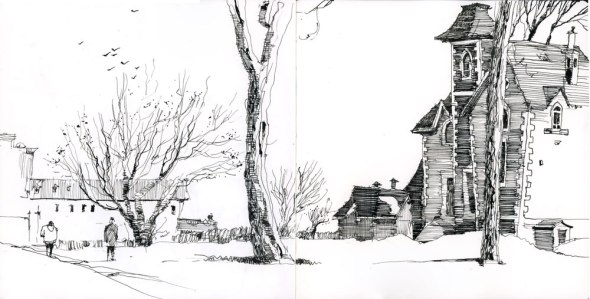
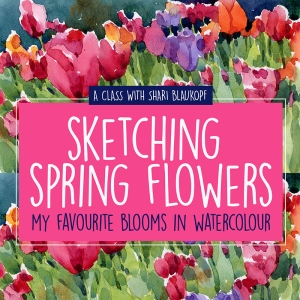

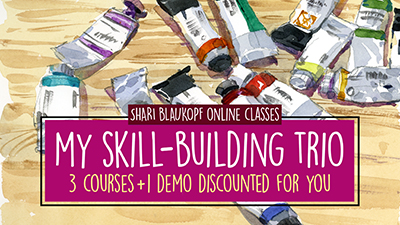
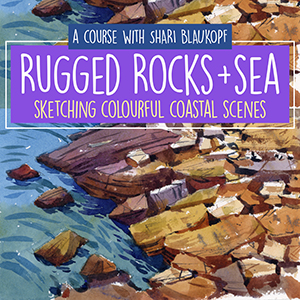


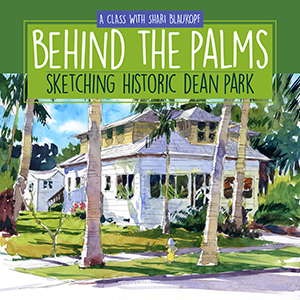

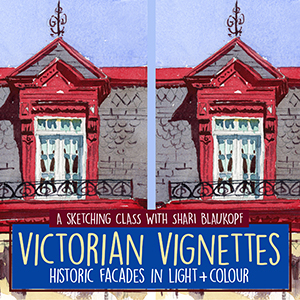
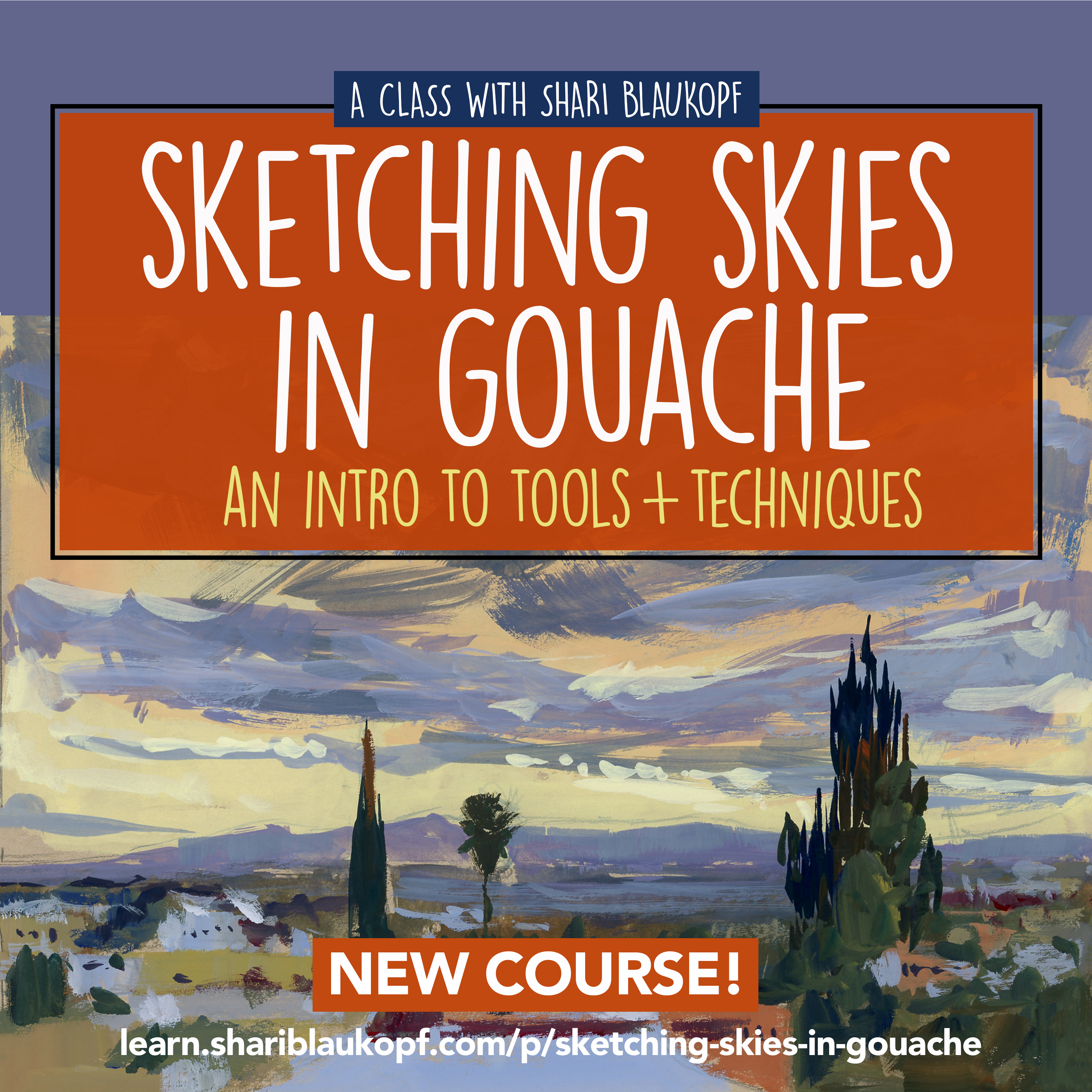
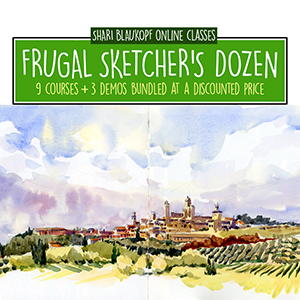

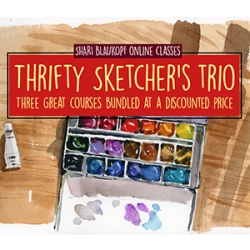
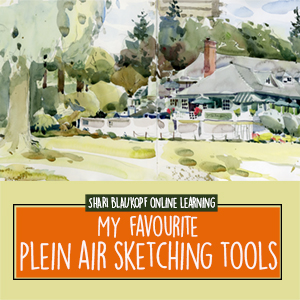

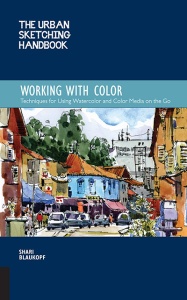
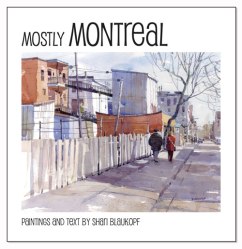


Beautiful line work Shari.
LikeLike
Thanks so much Wayne.
LikeLike
Hi Shari. Simply cannot believe how good this is when you haven’t used a dip pen for so long. Looks like a great subject and the drawing more than does it justice. Were you maybe tempted to add some washes – but decided to leave it be? Best, Tony
LikeLike
Thanks Tony. I don’t think I properly expressed how much fun I had using this. It is just a joy to draw with this. I could have gone on for hours. I briefly considered adding wash but decided to just build it up with line because the experience was so pleasurable. Have you used dip pens?
LikeLike
Hi Shari,
I’ve enjoyed all of your watercolors and hearing about your car studio! This pen and ink drawing really inspired me with all of the line varieties you created. I just signed up for a scientific illustration class with pen and ink and I can’t wait to start dipping my pen! I’m also trying to be as diligent in my habits of sketching as you are! Thanks so much for sharing!
LikeLike
Thanks for writing Carol. I’m sure you will enjoy the class if you are using a pen like this. It’s so much fun to use. Good luck!!
LikeLike
My suggestion… throw the markers away.
LikeLike
Good suggestion. Too bad it took me three years to discover this.
LikeLike
It is three years since you were in university?
LikeLike
Late starter.
LikeLike
Oh… I always thought you were in your mid 20’s.
LikeLike
HI Shari
Lovely sketch and great technique with a dip pen. The texture and tones suggest you have done this before!
The architecture is probably eclectic Second Empire (French).
The best book on dip pens is probably “Rendering in Pen and Ink” by Arthur Guptill. It is full of techniques and example from the great pen and ink artists of the early 20th century. It was our bible in architectural school and I still refer to it.
The 1976 Edition (not the abbreviated version) can usually be found on the book website abe.com.
Ross Sutherland aka mackay42
LikeLike
Thanks so much Ross. After googling it, I am sure the building is Second Empire French so you’re right about that. I’m still waiting for some Montreal history buff to help me out with the name of the building.
I will have to look into finding that drawing book. Sounds great.
I just had another look at your Flickr stream, although I have often admired your colourful drawings in the past. What pen do you use? I assume it’s not a dip pen since the line width is very even and there are no blobs anywhere.
LikeLike
I have been using a number of pens for sketching over the years, but currently my favorites are the Namiki Falcon in a fine nib, a Pilot Vanishing point pen in a fine and the Platinum Pens in a fine and a medium. They are expensive but the feel and convenience is worth the price. All three use cartridges (very convenient for traveling) but also come with converters for your favorite ink. See http://www.nibs.com for examples and prices.
The most effective pen for me is the Platinum line as they have cartridges for their carbon ink which is the best I have found to date: It dries quickly and is impervious to water color washes on most papers. It works very well on Stillman and Birn papers as well as hot press WC papers and some of the cold press papers as well.
I am searching for a flexible nib fountain pen so as to replicate the style of work in the Guptill Book, but have had no luck so tar.
I have also used the Lamy with carbon ink. For the price it is remarkable and I don’t have to worry about losing it.
This is probably TMI but I hope it helps.
I really love your blog as each entry is like taking a class from you.
Thanks
Ross
LikeLike
Actually it’s not too much information. Since you have been following for awhile you have probably read my grumblings about pens. I have been searching for something in a cartridge/converter pen that replicates the dip pen experience in terms of flexibility and variable line width depending on pressure. I have a Lamy that I love to write with, but when it comes to drawing, I find that it’s not flexible enough. I know my friend Marc Holmes uses lots of different pens as well so I should probably spend a few hours watching him work. I need something that is very fine but works well on cold press watercolour paper. It’s a complicated problem. Well, now not only have you given me book research to do, but pen research as well. Thanks!
LikeLike
I really like the mood of this one. beautiful drawing.
LikeLike
Thanks for writing!
LikeLike
Thanks Shari, if you find out more about the pens Marc uses or anything else about the flex nibs please post something on it. I know that a lot of sketchers would be interested, myself included
LikeLike
Ross, thank you, very helpful. I love to draw in ink. Use a Lami pen but am interested in trying others.
LikeLike
I love the intricate details–especially the trees and the birds. =)
I have a huge stain on the hardwood of my studio from spilling a bottle of China ink.
LikeLike
Very nice Shari!
LikeLike
Very nice !
LikeLike
Gorgeous! you are so talented. very impressive.
LikeLike
Thanks very much Rachel.
LikeLiked by 1 person
The Victorian house is the Judah House built in 1876, an unusual mix of Second Empire, Gothic Revival and an Italianate tower according to the book Mansions of the Golden Square Mile c. 1987. Judah was a lawyer, and their family owned the home until 1949, when it was bought by the Franciscans.
LikeLike
I knew someone would be able to fill me in. Thanks so much for the Montreal history tidbit Mary.
LikeLike